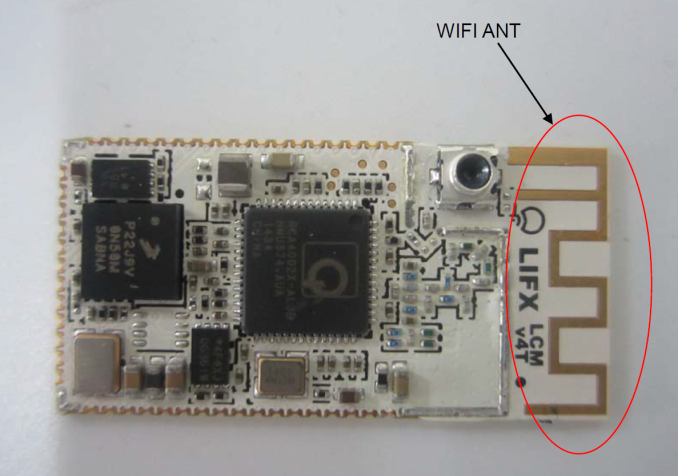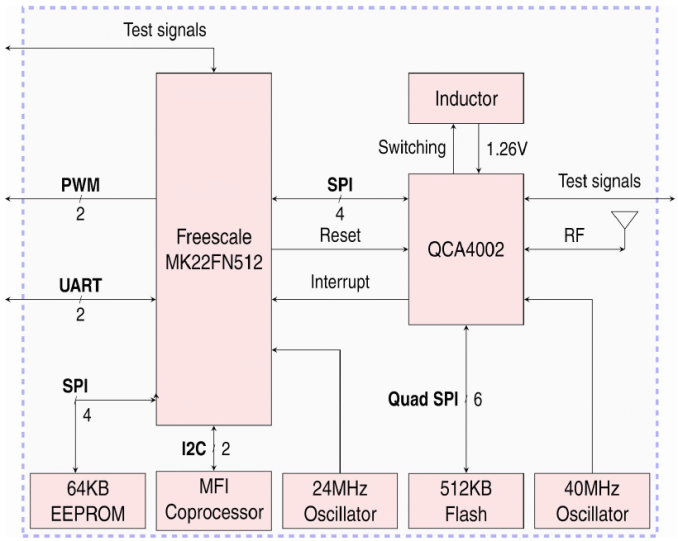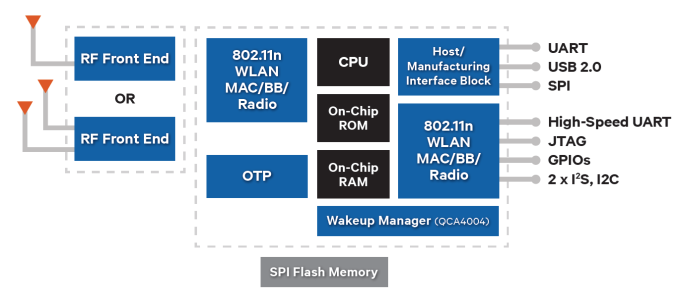LIFX White 800 Smart Bulb Review
by Ganesh T S on June 12, 2015 9:55 AM EST- Posted in
- Home Automation
- Wi-Fi
- Qualcomm Atheros
- LIFX

Introduction and Component Analysis
The Internet of Things (IoT) revolution has sparked an increased interest in home automation. Lighting is one of the major home automation aspects. LIFX is one of the popular crowdfunded companies in this space to have come out with a successful product. The success of their multi-colored LED bulbs brought venture capital funding, allowing them to introduce a new product in their lineup - the White 800. The launch of the White 800 also coincided with firmware v2.00 for the LIFX bulbs.
The initial products from LIFX were multi-color LED bulbs similar to the Philips Hue. The new LIFX White 800 is a white LED bulb with tunable color temperature. Color temperature is an important aspect in the lighting environment. In addition to visual comfort, it also affects human behavioral aspects. Different color temperatures are desirable for different human activities. Therefore, tunable color temperature in a single light bulb is a good thing to have. The specifications of the White 800 indicate 890 lumens of brightness (60W-equivalent), 25000 hours lifetime (22.8 years @ 3 hrs/day), 11 W power consumption and tunable color temperature from 2700K to 6500K.
The first generation LIFX bulbs relied on Broadcom's WICED platform. It also had a TI chip for 802.15.4 mesh networking. However, the White 800 gets rid of the mesh networking aspect and uses the QCA 4002 low-power Wi-Fi platform. This enables a lower price point for the White 800 compared to the other bulbs in the LIFX lineup.
At the heart of the unit is the lighting control module (LCM). LIFX also seems to be targeting this board towards OEMs in addition to using it within the White 800.
LIFX Lighting Control Module (FCC filing)
THe LCM documentation gives more insight into the internal components of the board.
The unit uses a Freescale Kinetis micrcontroller (ARM Cortex-M4-based) coupled with the Qualcomm Atheros QCA 4002. The QCA 4002 is very similar to the AR9330 used in the Ubiquiti mFi devices. The integrated CPU is MIPS-based. It is tuned for low power operation and, correspondingly, lower host CPU performance. The AR933x can run full Linux, but the QCA 400x is targeted towards embedded platforms. In the LIFX, the configuration (QCA 4002) is a 1x1 802.11n 2.4 GHz connectivity platform with the RF switches integrated.
The use of the QCA 4002 software stack on the Kinetis microcontroller allows for AllSeen / AllJoyn certification (the IoT standard backed by Qualcomm). The LIFX White 800 also carries the 'works with nest' logo, thanks to the cloud back-end.
We have looked at the internal hardware in the LIFX White 800. In the next section, we look at what the average consumer sees - the setup and usage process.













55 Comments
View All Comments
mikato - Friday, June 12, 2015 - link
The very small standby power mode it has now makes it more interesting as you can leave its power switched on and use the network to control it fully - making for a possibly more networked home in the future.ddriver - Friday, June 12, 2015 - link
It could actually have tremendously lower idle power use. That microcontroller is a ridiculous overhead for light bulb, it would be proportional to a quad socket 48 core xeon system with 128 gigs of ram for a machine dedicated to emails...The more elegant solution would be a single control unit for all lightning as well as other home automation, "smart bulbs" are a clumsy and inefficient solution. I'd rather have a "smart home" than a "dumb home with smart light bulbs".
MrSpadge - Friday, June 12, 2015 - link
Agreed - I think it would make more sense to include a small controller in th lamp itself, which will contain several bulbs. Which themselves will fail at some point and get replaced by the next ones.Solandri - Saturday, June 13, 2015 - link
Actually, it sounds like we need a new electrical standard. Kinda like the converse of PoE where you send power along cabling initially intended for network signals.A low bandwidth (so as to not cause widespread high-frequency interference) powerline ethernet standard should allow you to plug in "smart" bulbs into a home's standard electrical sockets, and have them controlled via a central control station which communicates with the bulbs over powerline ethernet. Only the control station would need wifi connectivity so you could control it. The individual bulbs would only need to receive instructions next time they were turned on and announced themselves to the control station, thus eliminating the always-on power draw of putting a wifi receiver onto every light bulb.
Navvie - Monday, June 15, 2015 - link
Something like X10?Zefeh - Friday, June 12, 2015 - link
I could see something as simple as the ESP8266 WiFi module as something that you could use instead of what they have. Load it up with the customized LUA firmware on the net and you have a pretty decent cheap small Microcontroller that can run LUA scripts with rx/tx WiFi comm, 2 GPIO's (some revisions) for 3.3 volt operation and around 23kb flash to mess with. Low power and cheap at 5 bucks a piece!Slapping an Cortex-M4 on there is ridiculous I agree. House automation systems should have a comm base that does all the decision making. The bulbs just need to communicate and turn on/off/dim.
Another interesting thing to think about is power wire communication. Had a prof. In college working on it, working on transmitting signals through already in place infrastructure and then just making the end points like lightbulbs understand what's said and complies with the request. Interesting concept to think of, very similar to the household WiFi power plug adapters.
boozed - Friday, June 12, 2015 - link
I'd love to have lightning in my house but my friends disagree.Wwhat - Saturday, June 13, 2015 - link
" I'd rather have a "smart home" than a "dumb home with smart light bulbs"."Well I'm sure daddy will buy you one..
ddriver - Saturday, June 13, 2015 - link
Because that's how you get stuff?chrysrobyn - Friday, June 12, 2015 - link
I could get really excited about this and deploy 10-20 throughout my house, if they could automatically change the white color based on the time of day. I'm really curious about the research into circadian rhythms getting input from light color and I'd like to try it out at home.